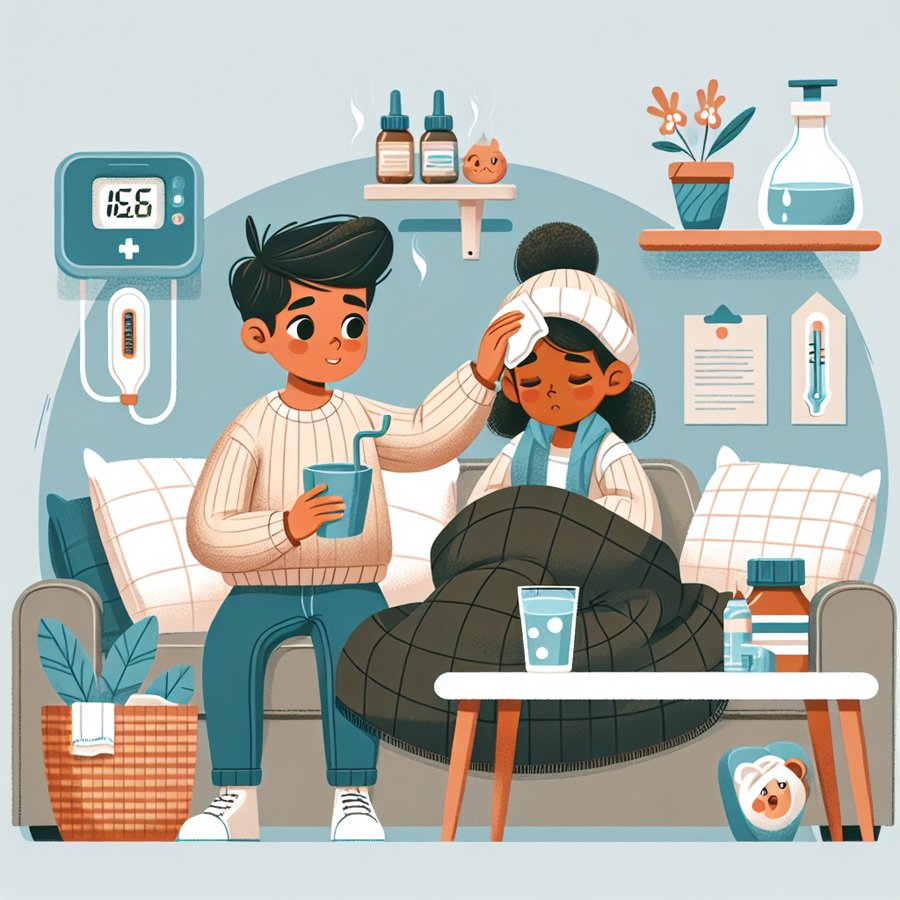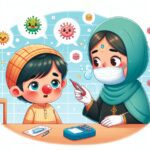One of the most common concerns among parents is how to manage their child’s fever effectively and safely. Strategies for safely managing fever in children are crucial for ensuring the well-being of the little ones while keeping the fever under control. This article delves into various strategies, offering parents and caregivers well-rounded advice on handling feverish conditions in children.
Understanding Fever in Children
Fever is the body’s natural response to fighting infections, whether they are viral or bacterial in nature. It’s important for parents to understand that fever, by itself, is not an illness but a symptom indicating that the child’s immune system is actively working to defend against pathogens. Recognizing the signs of fever and knowing when it’s time to act is the first step in strategies for safely managing fever in children.
Before panicking at the first sign of a high temperature, it’s essential to accurately measure the child’s fever. Digital thermometers provide the most accurate readings. Remember, a temperature reading above 100.4°F (38°C) is generally considered a fever. Understanding the different phases of fever and monitoring symptoms are pivotal in deciding the course of action.
Home Remedies for Reducing Fever
Several home remedies can be effective in reducing a child’s fever while ensuring their comfort. However, it’s vital to use these methods as part of a broader approach to strategies for safely managing fever in children. Always prioritize the child’s overall well-being and comfort during this process.
Keeping the child hydrated is paramount, as fever can lead to dehydration. Offer plenty of fluids, such as water, clear broths, or electrolyte solutions, to maintain hydration. Dressing the child in lightweight clothing and providing a lukewarm bath can also help reduce fever. However, avoid using cold water or alcohol rubs, as these can cause the body temperature to drop too quickly, leading to shivering, which actually raises the body temperature.
For more detailed guidance on hydration strategies, consider visiting Hydration Tips for Ill or Feverish Toddlers.
Strategies for Safely Managing Fever in Children
When it comes to effectively managing your child’s fever, medication is often considered after non-pharmacological methods have been tried. Ibuprofen and acetaminophen are common fever reducers, but they must be used cautiously and according to the child’s age and weight. It’s important to consult a pediatrician before administering any medication, as part of your strategies for safely managing fever in children.
Monitoring the child’s fever and symptoms is also crucial. If the fever persists for more than 24 hours in a child younger than 2 or more than 3 days in an older child, or if it’s accompanied by other concerning symptoms such as difficulty breathing, rash, or excessive drowsiness, seek medical attention promptly. Recognizing when to seek help is vital in managing your child’s health effectively.
For comprehensive advice on when to call the doctor, refer to Navigating Your Baby’s First Cold: Symptoms and When to Call the Doctor.
Remember, effective fever management is not just about reducing the temperature but ensuring the overall well-being of the child. Combining home remedies with careful monitoring and appropriate medical advice when necessary forms the cornerstone of strategies for safely managing fever in children. By staying informed and prepared, parents can navigate their child’s fever with confidence and care.
For additional resources on child health and safety, exploring topics such as First Aid Kit Essentials for New Parents and Understanding Infant CPR: A Lifesaving Guide for Parents can provide valuable knowledge and peace of mind.













